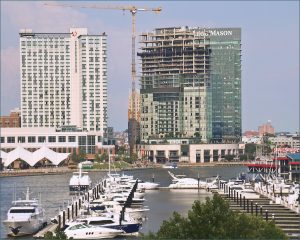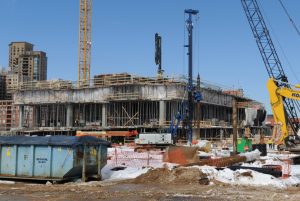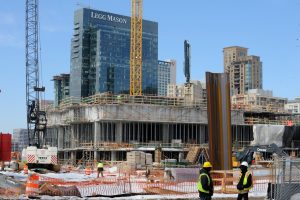 This is the second in our series of posts about TIFs. A TIF – if you remember from our piece entitled “To TIF or Not To TIF?” which became an instant classic – stands for Tax Increment Financing.
This is the second in our series of posts about TIFs. A TIF – if you remember from our piece entitled “To TIF or Not To TIF?” which became an instant classic – stands for Tax Increment Financing.
Basically, our city government is borrowing money by selling bonds – money that will be used to subsidize a real estate project that the city thinks is a good idea and believes would not happen without the subsidy. And what’s the collateral the city offers investors who buy the city’s bonds? It’s the incremental stream of property taxes that the city will collect from the project property which is going to be much more valuable when the project is complete and open for business.
For the most part, the city’s TIFs have been large, for millions of dollars, long-term, paying back over 20 years, and business-oriented. One recent TIF for a major harbor project was for $107 million. Let’s round that down to just $100 million to make the math easier.
Yes friends, the city of Baltimore, through the Baltimore Development Corporation, borrowed over $100 million to give to a single harbor project.
“What?!” 
Yes. We feel exactly the same way, but it’s true. The city gave up $100 million – $107 million actually – plus 20 years’ interest it owes the bond holders to build a high-rise something. Yes, it will employ people, but it’s not clear how many of those workers will live in the city, pay taxes in the city and spend their income in the city. Hopefully, the project will increase the value of the properties around it too, producing badly needed additional taxes for the city. Of course, the additional taxes are badly needed precisely because the city gave up the incremental taxes the project itself will be paying over the next 20 years.
Here’s an idea. Instead of building something huge around the already successful harbor, why not use the $100,000 to repopulate the city by enticing commuters to buy and refurbish housing in the heart of the city’s most disadvantaged neighborhoods that need all the help they can get? Maybe save some of it to encourage a major chain grocery store and other retailers/employers to open in the same neighborhoods they are currently avoiding?
Just think about the housing for now. We can talk about using TIFs to attract employers in another post. Pretend you’re single person or maybe a couple, but no children yet. So what will it take to convince you to move here, into a house in a transitional neighborhood? By “transitional” we mean that it’s on the border between somewhere you’d like to live and somewhere, honestly, that isn’t all that desirable.
Well, for one thing, we can give you the property for free – assuming it’s vacant and abandoned property the city has taken over.
“Hmm. Interesting, but…”
Okay. You drive a hard bargain. How about if, in addition to free property that didn’t cost us anything, we give you some cash to help out with your expenses?
“Really? How much cash?”
$5000.
“How much?!”
“Did I save $5000? I meant to say $10,000.”
Well, you get the point. If we give people property that didn’t cost us anything and that nobody else wants plus, let’s say, a $10,000 cash bonus… If that’s enough to get someone to move to the city who would otherwise rather commute, would that be worth it to the city?
Let’s estimate that the value of the refurbished home is $200,000 – could be higher, but let’s say $200,000. The current property tax rate is 2.28%. The current value of the property is near $0. Once the house is refurbished, the owner is going to be paying the city $4560 per year in property taxes. What that means is that a small TIF for $10,000 could be completely repaid, not in 20 years, but more like just 3 years.
And the really good news? For the $100 million the city gave the harbor project, we could give $10,000 to 10,000 families. Or $20,000 cash bonuses, if necessary, to 5,000 families.
Think about it. Thousands of people living, in newly refurbished houses that used to be vacant eyesores, paying taxes and spending their income in our neighborhoods that are struggling. Think of all the additional local jobs those thousands of families spending their  income in the city will create? Think about how the city can do this again and again, every 3 years instead of every 20?
income in the city will create? Think about how the city can do this again and again, every 3 years instead of every 20?
Now you pick? A $100 million 20 year TIF to a harbor high-rise, or 10,000 little TIFs to bring as many families into the neighborhoods in our city that really need the local economic benefits these new residents will bring them?
“Are you kidding?”
We know. We know. The question hardly seems fair.

